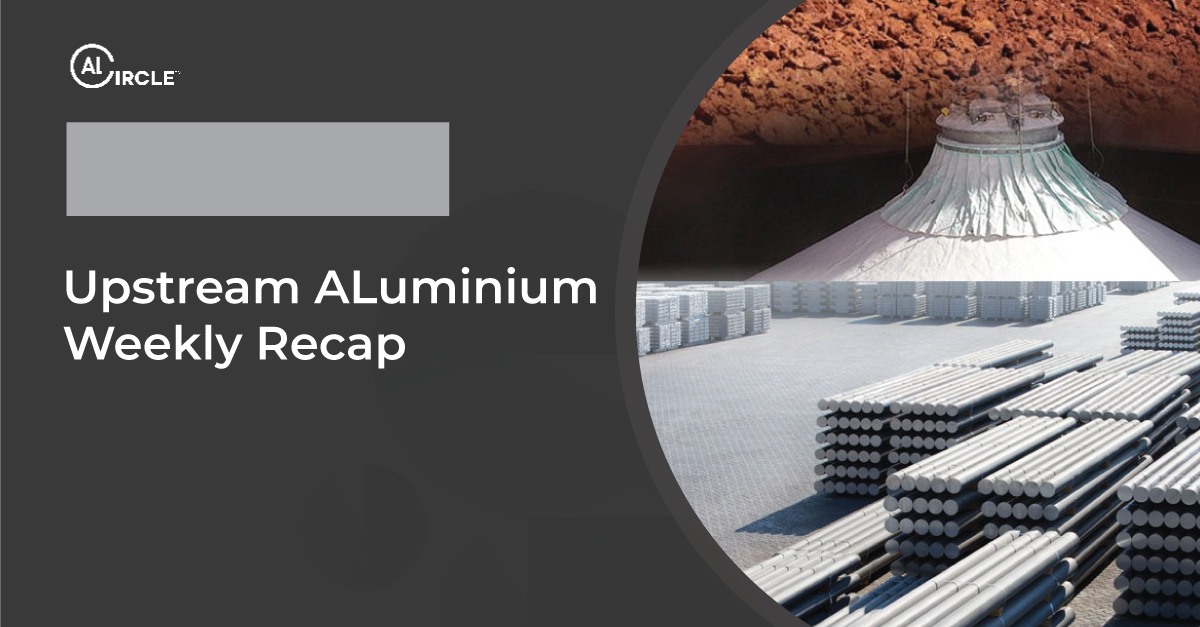The US has doubled tariffs on aluminium imports to 50 per cent, aiming to protect domestic industry. But this decision has been accepted by the industry in different manners. Like, for Century Aluminium, the move has been welcomed in a positive manner and may help in the company’s profit. However on the other hand, the beverage sectors, construction sectors are facing the opposite wave. Europe, including Russia, saw a 2.2 per cent year-on-year increase in primary aluminium production during the first four months of 2025, according to data from the International Aluminium Institute. This growth was driven by steady output across most months, except February, which saw a slight dip to 537,000 tonnes from 540,000 tonnes in February 2024. To know more click here. To know more what happened throughout the week, read below.

The global aluminium market is once again pulsing with optimism as futures on the London Metal Exchange climbed to USD 2,460 per tonne today, rebounding from a low of USD 2,166 per tonne in April. This uptick reflects growing anticipation around high-level trade talks between China and the United States in London, highlighting how even modest easing in trade tensions can spark a wave of confidence across commodity markets.
Rio Tinto Group is in discussions with Australian authorities over a potential multibillion-dollar support package for its Tomago aluminium smelter. The talks centre on securing a favourable electricity supply agreement for the 2026–2029 period and shaping production tax credits to help buffer the operation against soaring energy costs. Read to know more
Morgan Stanley analysts have warned that President Trump’s move to double aluminium import tariffs to 50 per cent could lead to higher aluminium prices and increased costs for end users. Citing a premium benchmark of 20 cents per pound for aluminium purchases in the U.S. physical market, the analysts suggested that such a steep tariff hike would likely result in further price increases to ensure continued metal inflows into the country. To know more click here.
Aluminum Association President & CEO Charles Johnson issued the following statement in response the Trump administration’s decision to increase Section 232 aluminium tariffs from 25 per cent to 50 per cent: “Re-establishing a more level playing field for domestic producers is critical but a Section 232 tariff of 50 per cent threatens to undermine the very industry the administration aims to support.” To know more click here.
To prevent a potential supply crunch, the London Metal Exchange has instructed Mercuria Energy Group Ltd to lend out a portion of its substantial June aluminium holdings, which surpass the available metal in LME warehouses. As of June 2025, Mercuria’s aluminium position was estimated at 600,000 to 800,000 tonnes—accounting for 30 to 39 per cent of the open interest for the month. Click here to read more.
Other important news under the primary sector
Century Aluminium announced a $10 million investment in maintenance at its Sebree smelter in Kentucky this quarter. The company stated that the facility’s consistently strong performance has allowed it to bring forward major maintenance work on the carbon plant, which was initially planned for next year.
Researchers at the Khomein branch of Islamic Azad University in Iran have successfully developed aluminium fluoride, a compound known for reducing the melting point of aluminium. Aluminium fluoride (AlF₃) is a colourless, inorganic substance commonly appearing as a white powder or granules, with a density higher than that of water.
Some significant events under the bauxite segment
The Ghana Integrated Aluminium Development Corporation (GIADEC) has reached a significant milestone in its quest to establish a fully integrated aluminium industry, having secured six new bauxite mining licences. Announced on Thursday, June 12, the development was confirmed by GIADEC CEO Reindorf Twumasi Ankrah, who stated that the licences would enable Ghana to tap into its vast bauxite reserves estimated at 920 million tonnes across three key sites – Nyinahin, Awaso, and Kyebi. Click here to read more
Renewed optimism is building for Emirates Global Aluminium’s (EGA) subsidiary in Guinea, as it looks to resume dialogue with the Guinean government over lifting restrictions on its bauxite mining activities. Tensions between the two sides have persisted since October 2024, when authorities imposed limitations on mining operations and bauxite exports. The situation escalated when Guinea’s customs authorities halted GAC’s bauxite shipments, citing significant concerns over unpaid customs duties. Click here to read more.
Industries in Ketapang Regency, West Kalimantan, are reshaping the region through increased mining investments and advancements in downstream processing. With rich potential spanning from coastal areas and plantations to bauxite reserves, Ketapang has become a strategic hub for industrial growth. According to the West Kalimantan Investment Coordinating Board and One-Stop Service, total realised investment comprising both Domestic Investment (PMDN) and Foreign Investment (PMA)—reached IDR 31.47 trillion (USD 1.94 billion) in 2024. Click here to read more.
Alumina segment
India’s refractory sector is undergoing a transformative phase, driven by rapid industrialisation, rising steel production, and the ambitious “Make in India” initiative. Leading this growth is Almatis, a global pioneer in specialty alumina, which continues to strengthen its position with a cutting-edge, fully integrated Tabular Alumina plant located in Falta, West Bengal. Click here to know more.
In April 2025, alumina production saw a month-on-month decline across most countries and regions except for one notable exception, Africa & Asia (excluding China). According to the International Aluminium Institute, the region produced 1.173 million tonnes of alumina in April, marking a 4.45 per cent increase from 1.123 million tonnes in March.

